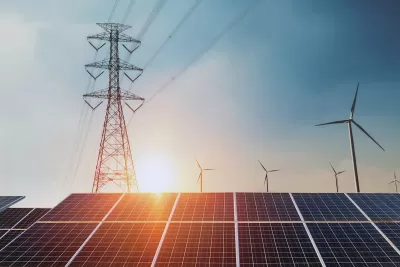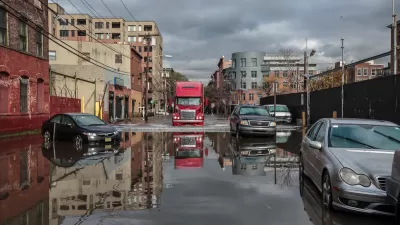How preparation and modern infrastructure can prevent power failures in an era of climate change.

The contrasting experiences of Texas and California during recent extreme weather events highlight the critical importance of resilient energy infrastructure and strategic planning in the face of climate change. For Yale Climate Connections, Dana Nuccitelli examines how Texas’ lack of preparation during Winter Storm Uri in February 2021 led to catastrophic power outages, while California’s proactive measures helped the state avoid major blackouts during record-breaking heat waves.
In Texas, over 4.5 million homes lost power during the storm, resulting in hundreds of deaths and revealing significant vulnerabilities in the state’s energy grid. Despite initial claims by Texas Gov. Greg Abbott that renewable energy was to blame, investigations showed that failures occurred across all types of power generation, including natural gas, coal, and wind. The primary issue was a lack of winterization and preparation for severe cold, not the inherent reliability of any particular energy source.
In contrast, California faced its own challenges during a record heatwave in 2020, which led to brief rolling blackouts. However, in the years following, the state made significant investments in grid management, battery storage, and regional cooperation. These efforts paid off during the extreme heat of 2024, when California's grid not only avoided blackouts but also provided energy to neighboring states.
For urban planners, these examples underscore the importance of investing in resilient infrastructure and adopting a comprehensive approach to energy management. Texas’ decision to maintain an isolated grid system further limited its ability to import power during the crisis, highlighting the risks of grid isolation and the benefits of regional integration.
FULL STORY: How mismanagement, not wind and solar energy, causes blackouts

Planetizen Federal Action Tracker
A weekly monitor of how Trump’s orders and actions are impacting planners and planning in America.

Congressman Proposes Bill to Rename DC Metro “Trump Train”
The Make Autorail Great Again Act would withhold federal funding to the system until the Washington Metropolitan Area Transit Authority (WMATA), rebrands as the Washington Metropolitan Authority for Greater Access (WMAGA).

The Simple Legislative Tool Transforming Vacant Downtowns
In California, Michigan and Georgia, an easy win is bringing dollars — and delight — back to city centers.

The States Losing Rural Delivery Rooms at an Alarming Pace
In some states, as few as 9% of rural hospitals still deliver babies. As a result, rising pre-term births, no adequate pre-term care and "harrowing" close calls are a growing reality.

The Small South Asian Republic Going all in on EVs
Thanks to one simple policy change less than five years ago, 65% of new cars in this Himalayan country are now electric.

DC Backpedals on Bike Lane Protection, Swaps Barriers for Paint
Citing aesthetic concerns, the city is removing the concrete barriers and flexposts that once separated Arizona Avenue cyclists from motor vehicles.
Urban Design for Planners 1: Software Tools
This six-course series explores essential urban design concepts using open source software and equips planners with the tools they need to participate fully in the urban design process.
Planning for Universal Design
Learn the tools for implementing Universal Design in planning regulations.
Smith Gee Studio
City of Charlotte
City of Camden Redevelopment Agency
City of Astoria
Transportation Research & Education Center (TREC) at Portland State University
US High Speed Rail Association
City of Camden Redevelopment Agency
Municipality of Princeton (NJ)




























